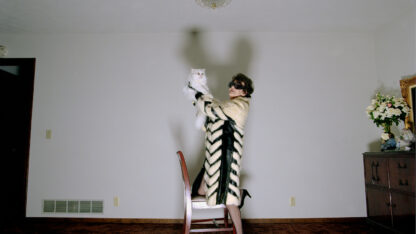Remembering the life of the 'Godmother of Photography in Atlanta'

Acclaimed photographer Lucinda Bunnen released a book of her works called “Gathered” in 2018. Bunnen passed away in March at the age of 92.
Myke Johns / WABE
On March 27, the notable Atlanta photographer Lucinda Bunnen passed away at 92. She’s been called “the godmother of photography in Atlanta” and “patron saint of photography in our city.” The larger-than-life arts philanthropist helped establish the High Museum’s photography collection, was the subject of seven published books and received several honors, including the Nexus Award and the Georgia Governor’s Award for the Arts and Humanities. Gregory Harris is the High Museum’s curator of photography, and he joined “City Lights” host Lois Reitzes via Zoom to talk more about Lucinda Bunnen’s legacy.
Interview highlights:
A quiet force of influence behind the lens:
“She was very politically active, and so she was part of these circles of people who are influencing politics and Atlanta, and then eventually national politics as the Carter administration came into power,” said Harris. “Her goal was to really show that the South wasn’t this slow, backwards place, particularly Atlanta … This was a progressive, forward-looking city. It was the center of a lot of business in the South.”
“She wanted to make sure that the nation knew that Atlanta was really where it was happening, and these are the people that were making it possible. So she would go to parties, she would go to rallies, she would visit people at their homes, and she would photograph these interactions with people in a very spontaneous and fly-on-the-wall way. That’s how we got this real-life picture of how decisions were made, how culture was built, how politics was playing out, through these photos.”
“Making” versus “taking:”
“When she was making pictures, and she was collecting photographs in the beginning of the early 1970s, the art world didn’t really accept photography at the time, and so there was a sense that photography was easy; that it was just this mechanical process,” Harris explained. “You point the camera, you push a button and you send it off to a lab and everything is done.”
“‘Taking,’ as I feel, it’s a very passive verb, whereas ‘making’ is active. And so she always used that term, that she was ‘making’ a photograph, that there was a lot of intention. There was purpose. There was a distinctive vision behind the process of seeing photographically and making photographs.”
Gems from the High’s Bunnen Collection:
“One of the most notable series that we have in the collection is Nicholas Nixon’s ‘Brown Sisters.’ So beginning in 1975, a photographer from Boston, Nicholas Nixon, started photographing his wife and her three sisters, and he made a picture every year and has continued to do it since then. Lucinda started collecting the series about one year after he started it,” said Harris. “It’s this incredible study of the bonds of family, of aging, the passing of time.”
“One of the things that’s most distinctive about the Bunnen collection was that it’s not just a gathering of the usual masterpieces,” Harris said. “For example, the Ansel Adams that we have from Lucinda is of some factory pipes and container tanks. And she was very insistent that she didn’t want to have the same pictures that everyone else had. So with a well-known photographer, she would often pick a more unusual photograph.”
More about Lucinda Bunnen’s extraordinary collection at the High Museum and on the artist herself can be found at high.org/exhibition/the-bunnen-collection-of-photography.







